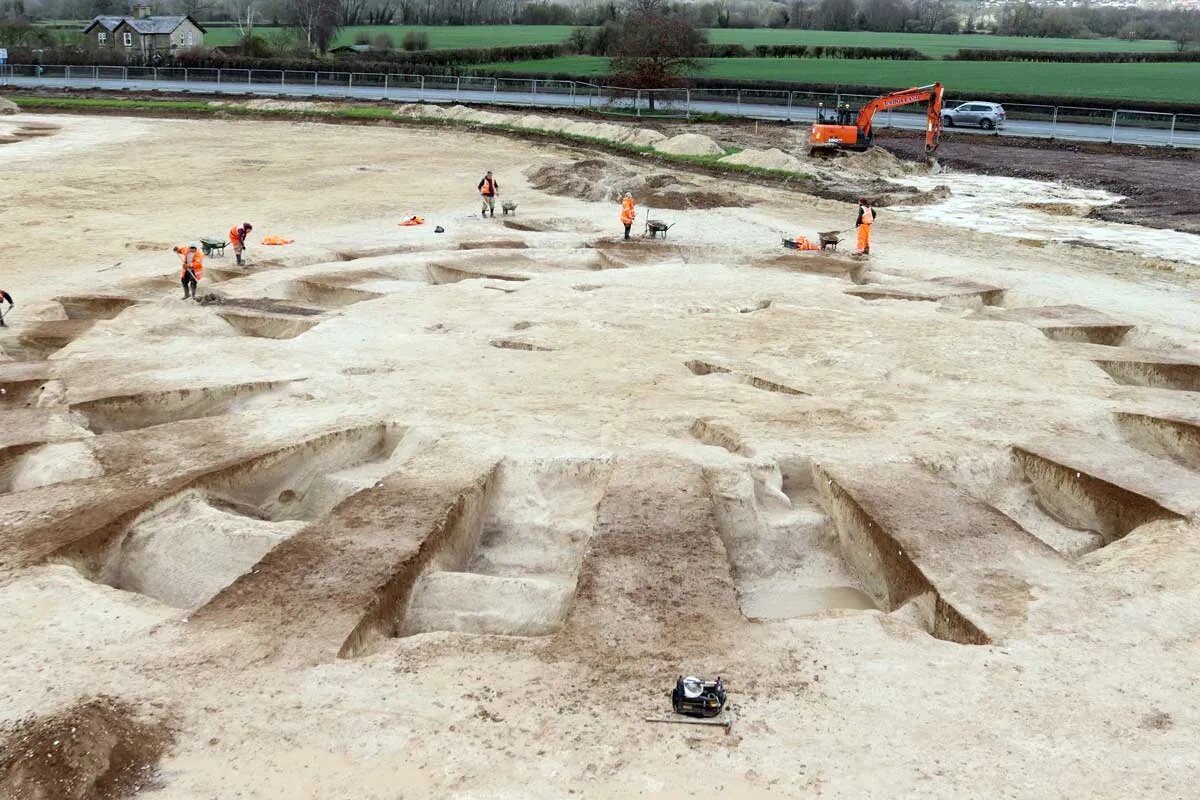
Extensive research conducted by archaeologists has unveiled a vast cemetery consisting of burial mounds from the Bronze Age.
These ancient mounds, estimated to be approximately 4,400 years old, were unexpectedly discovered during preparations for a nearby construction project, merely 10 miles (16 kilometers) away from the renowned Stonehenge.
Situated on a chalk hillside near Harnham, an area on the outskirts of Salisbury in southwest England, this cemetery comprises more than 20 circular mounds commonly known as barrows. They were constructed between 2400 B.C. and 1500 B.C.
While the proximity to Stonehenge may lead one to assume a connection between the two sites, there is currently no concrete evidence supporting such a notion.
Nevertheless, it is worth noting that these barrows were built during the same period as some of the central stages of Stonehenge, as confirmed by a statement released by Cotswold Archaeology—a private organization entrusted with the excavation process.
The smallest of these mounds measures approximately 33 feet (10 meters) in diameter, while the largest stretches across 165 feet (50 meters). The majority of the barrows fall within the size range of 65 to 100 feet (20 to 30 meters) in diameter.
Barrows grouped in ‘pairs of six or so’
Alistair Barclay, an archaeologist and the post-excavation manager at Cotswold Archaeology said that the barrows found within the cemetery are arranged in pairs or small clusters consisting of approximately six mounds. This information was shared with Live Science via email.
Since their arrival at the site in 2022, the archaeologists have successfully conducted complete excavations on five barrows, which were located in two different areas.
Some of the Cursus barrows – a linear arrangement of Early Bronze Age burial mounds, situated close to Stonehenge. #TombTuesday pic.twitter.com/GT66vEo2lD
— Kevin Wilbraham (@KPW1453) June 6, 2023
Four of these mounds were already known and identified, while the fifth remained unknown until now. The reason for its obscurity could be attributed to loose soil from an uphill region that had covered it over time, concealing its existence.
One of the barrows displayed a strange feature. It was originally surrounded by an oval-shaped ditch, but during prehistoric times, this ditch was replaced by a nearly circular one.
This change suggests that this particular barrow might have been constructed prior to the others during the Neolithic period, which concluded around 2400 B.C., according to Live Science.
Within this barrow, a collective burial site was discovered near its center, containing the skeletal remains of both adults and children, according to the statement.
Excavation of prehistoric burials
During the excavation process, the team of archaeologists uncovered the remains of nine additional burials and three artifacts from graves situated among the barrows.
Among the grave goods discovered, there were distinctive round drinking vessels known as “beakers,” which indicate a connection to the Bronze Age “Bell Beaker culture.” This cultural phenomenon was prevalent in Britain after approximately 2450 B.C., as reported by Live Science.
Moreover, the Cotswold Archaeology team has identified signs of later human activity at the site. They have found compelling evidence that suggests the presence of an Iron Age cultivation area. This area comprises more than 240 pits and postholes.
Some of these pits were likely employed for storing grain, while the majority served as disposal sites for waste materials.
See all the latest news from Greece and the world at Greekreporter.com. Contact our newsroom to report an update or send your story, photos and videos. Follow GR on Google News and subscribe here to our daily email!



